Amplifying your Client Revenue on Zalando
Overview
In this episode, Paul Sonneveld joined by Steven Van Den Ouweland, the Founder/CEO of Distrilink shares his expertise to help expand your client base to Zalando Platform, the leading online fashion marketplace in Europe.
Complete Transcript of the Podcast
Introduction
Hi, and welcome to another live episode of Marketplace Masters. Brought to you by MerchantSpring, the leading marketplace analytics platform for Amazon agencies and vendors. Marketplace Masters strives to go deeper into the challenges that agencies face to lift e-commerce and marketplace performance via practical actions and insights.
Paul Sonneveld
And that includes Expansion. I'm your host, Paul Sonneveld, and today we'll talk about how we can expand your client revenue to Zalando, the leading online fashion marketplace in Europe. I've invited Stephen Van Den Ouweland to join us and share his valuable expertise and perspectives on how to best achieve this.
Allow me to introduce him to you. Steven is the CEO and founder of Distrilink, an esteemed e-commerce agency that connects brands, stores, and distributors to the largest European online marketplaces. With Steven’s team, you can have beautiful listings and efficient advertising, logistics, and customer service without requiring any in-house IT knowledge or tools. Thank you so much Steven for being on the show today.
Steven Van Den Ouweland
Thank you, Paul, for inviting me.
Paul Sonneveld
So today we're talking about Zalando. Now I live mainly in an Amazon world, a little bit of Walmart, Shopify, and a whole bunch of other marketplaces. But Zalando is perhaps not as well known to our audience. So let's just start right there. What is Zalando and how did Zalando even come about?
Steven Van Den Ouweland
So Zalando is actually one of the biggest European marketplaces. It has over 51 million consumers, generates around 10 billion euros in revenue and is represented in 25 different countries in Europe. It's by far the biggest online marketplace for fashion. And to put it in perspective because you're coming from Amazon country. Zalando has a share of the market of around 10% while Amazon has only 5% of the market in fashion.
So, if you can be successful in fashion on Zalando, then the profit can be twice as high as being the same in, on Amazon. Was also mentioned in, let's say, the same piece of birth is, is, about you. About you, let's say like a European marketplace that has only 1% of the share market. So, If you want to be somewhere as a fashion brand in Europe, you 04 need to be, you need to be on Zalando.
Paul Sonneveld
So, am I hearing that? So Zalando actually has a 10% share of fashion and apparel?
Steven Van Den Ouweland
Yeah.
Paul Sonneveld
That is the share of e-commerce. I'm assuming, Amazon is actually a distant second at 5%.
Steven Van Den Ouweland
Yeah.
Paul Sonneveld
And then the third about, was it About You?
Steven Van Den Ouweland
It’s About You. Yeah. Are you coming from the kind of let’s say like a cluttered ranking of a lot of let's say, smaller marketplaces with only one or 2% share of markets.
Paul Sonneveld
Yeah, yeah, yeah. So very, very, that’s a niche in terms of the Apparel space. So, what countries are we talking about here? Obviously, we're talking Europe, but what are the most prevalent countries when it comes to Zalando?
Steven Van Den Ouweland
Zalando is from Origin, it's a German marketplace. And that's also where they built the foundations. When Zalando did its expansions in 2010, it was the first to let's say, like German-speaking languages like Austria, like Switzerland. As of 2010, they entered into the Netherlands, which was then the first non-German country that they have approached. And currently, they are represented in let's say the majority of Western Europe.
That means the countries like Sweden, but also, Belgium, Spain, Finland, Poland, Czech Republic, and so on and so on. So, I think they started in 2008. And then they grow, let's say like, substantially, over the courses of the years with, I think the latest countries that have been added in 2022. In 2022, was Hung Hungary and Romania. So more and more making the step from Western Europe into also Eastern Europe. For the time being, the focus on Zalando is on Europe only.
Paul Sonneveld
And solely on Apparel, Fashion. Are they branching out into any other adjacent categories like health and beauty or,
Steven Van Den Ouweland
Yeah.
Paul Sonneveld
Fashion accessories. Is there, is there any sort of attempt there?
Steven Van Den Ouweland
So they started actually like, actually they copy-pasted back in the days, not know if you still remember this name, like Zapples, which was a, a famous, online, marketplace, from the United States, which was actually a shoe retailer back in the days. And that's how Zalando approached it in the same way in 2008 that they said, hey, this is a kind of, let's say like white space in Europe. Let's build also something similar. And that's how we actually started. Let's say an online shoe store. And then throughout the years, they expanded more into, fashion, and apparel.
Also, let's say then adding, I think like two years ago personal care towards their portfolio. And now they're also recently added, twice to it. So they stay really, let's say like, stick to the core that it's around. Let's say like shoes and fashion, but then gradually looking for the boundaries of the categories so it still makes fits. So it still makes sense to have those categories under their umbrella.
Paul Sonneveld
Yep.
Steven Van Den Ouweland
Because they've also learned, let's say that approaching adjacent categories, it's not so easy. You need to find the right brands, but you also need to find the consumers. And it goes a little bit hand in hand. So they do it, let's say like at a slower pace then expanding into new countries. But still, they're looking, let's say like, for new opportunities, for growth.
Paul Sonneveld
So let's talk a little bit about the differences between Zalando and the others. I know you've mentioned a few already, but maybe if we can break it into two parts, the differences from a consumer point of view, if you're shopping for fashion versus selling.
So maybe, and of course when I say other marketplaces, most of us are thinking Amazon. That's just a natural bias. So. Let's start from the seller's point of view. If I'm a buyer on Zalando, what are the key differences I'm going to find in terms of the proposition, of buying something from Zalando versus Amazon?
Steven Van Den Ouweland
I think where that is, if you, you mean like as a seller? You mean like, from a company perspective? I think the biggest difference is the fact that Zalando is a curated marketplace. That means that you cannot easily access the marketplace without growing through a very tough KYC procedure.
Because Zalando, they want to guarantee a certain quality of the brands that they can offer on their marketplace. And as a consequence, they don't allow everybody to come in on the platform. Even that they are currently doing an exercise, where they are cutting brands from the platform. If the brand doesn't need their let's say like ethical, sustainable, and let's say qualitative requirements, they actually send out, let's say now, currently, letters to brands that they will stop the collaboration within a few months, time.
So I think that's, let's say where it's the biggest difference as a seller on, on Zalando marketplace is that you are, let's say part of a selected group of brands that has, let's say like, the right qualitative requirements, that's in line with what Zalando wants to offer to its consumers. And I think also like, prices should be, okay, from a medium to premium. Not uber premium, and not too cheap. So where you, let's say, like an offer to your consumers as being Zalando, a certain perception of quality towards your consumers.
That's one thing also as a seller, and that's, it's not so easy, let's say, to get your products properly uploaded. It takes a lot of leg, tender love and care. To get your products, listed in the right quality. And very important here is the first-time-right principle. If it doesn't get uploaded the first time, right, then it takes a lot of work and a lot making of cases, like most of, you know, like you are doing on, on Amazon, to get the, let's say the, the listings re-checked, re-evaluated. So it's in line with your requirements. So on the one side, it makes it also a pretty intensive marketplace if you want to be successful there.
Paul Sonneveld
So in terms of success actually, I want to come back to the onboarding and some of those other questions there because I think there's a lot of detail we can explore. But I want to go back to that one of the first points actually you made in terms of the difference. You're saying, you mentioned the word profitability, right? Yeah. And you know, if I was a betting man, I would say a lot of people tuning in today is because their profitability on Amazon is really struggling. Yep.
So they're looking for other channels. Now, Zalando is not the right answer, if you are operating in the electronics or tech space. Yep. It's not a good category fit. But assuming that it is a good category fit in terms of the apparel on the right Architecture, in terms of your brands, explain to me a little bit more what's inherent about the Zalando marketplace that means profitability and profitability levels tend to be better than, than some other alternatives.
Steven Van Den Ouweland
I think if you look, let's say like purely the commission, it's pretty similar to like what you see on Amazon. Also, Zalando applies roughly speaking, a 15% commission. On the retail price including VAT. What's a big difference with Amazon is the pay-per-click or let's say the sponsored products. For Zalando, it's also, let's say like in, an important driver to bring visibility to the products on the platform, but it's not like in the same extent as on Amazon, but it's also for Amazon itself, an important, profit driver. For Zalando, it's more, let's say, like a tool that you can offer to your sellers that can help them to become more successful on Zalando.
As a consequence, the pay-per-click is cheaper on Zalando for example, than on Amazon. Also because the competition is less intense on let's say one ASIN or one AIN code versus on Amazon. Given it's a current curated marketplace, you don't have let's say this intense, price competition, to win the buy box.
Normally by accident, you already have, let's say, have the buy box. As it's being covered in the KYC procedure and the brand's approval, procedure. So that, let's say, that helps that the playing field is much cleaner than the one on Amazon. And as a consequence, you don't need to go into ongoing price fights that actually erodes your margin to the bottom. And that actually helps nobody to win.
That's one thing. The second thing is also, in the case of Zalando, the delivery timings are two to four days. Well, in Amazon, if you want to be really successful, you need almost to deliver, the next day. The longer your delivery timings also, let's say the cheaper you can organize your logistics. Because you are, will be able to, bundle it in a smarter way or to make use of different, formulas so that you don't need to pay so much for your, transport.
Paul Sonneveld
Sorry if I can just pause, I just want to go back before we get onto logistics, I want to just talk about pricing a little bit more or ask a follow-up question. Because what I'm hearing is, so the commission is roughly the same. Yeah. Advertising is significantly low because you're on a curated marketplace. Once you're in, the competition is less, you can run your own race. You know, the CPCs are not as high at all in terms of Amazon. You mentioned pricing as well.
In your experience, can brands charge a premium on Zalando for the same product versus Amazon? Are they able to command a higher price on the Zalando platform versus Amazon? Or is that still hard to do? I know there's an aspect of the competition is significantly less. But I'm also thinking about the cross-channel comparison.
Steven Van Den Ouweland
Zalando offers a seeming, of a flawless, a perfect, consumer experience, with also some extra benefits for the consumer. Like for example, you have the ability to return your products. The first hundred days while I believe on Amazon, it's only 30 days. So, consumers let's say are when they are on the platform, they are really in a buying mode, often.
And Zalando is really good, let's say in convincing people to buy the products because of the way how the platform has been set up. Because of the value that they, or let's say the requirements that they give to content, to make sure that packages are the right quality and so on and so on. It also means that even if you ask a few Euros extra on a product, it goes through. Like consumers don't notice. They are not, let's say, comparing with of different sellers. They're only comparing with, let's say, similar brands on the platform at a similar, let's say price level. But they're not comparing with brands which are with sellers who have the same product but a cheaper price. And given that, the consumer is bought in the right atmosphere, the consumer has to say like, the risk for the consumer to buy your products is lower. You're able, let's say, to charge a few Euros extra, per product if you do it in a smart way.
Paul Sonneveld
Yeah, no, that makes sense. That, a lot of brands must, that must be music to their ears, right? Just to get a little bit more price realization and focus a little bit more on the convenience and the shopping experience to try and drive that price up. Very interesting.
Now let's go back to you started talking about logistics, warehousing and all of that. Obviously, on the Amazon side, FBA, it's really hard to even play the Amazon game without being part of the FBA network or the Pan-European Fulfillment Network. You know, whatever that looks like in Europe. I'm just conscious that Zalando is also multi-country as well in Europe. How does that work? How does the logistics work? Is it merchant fulfilled, fulfilled by them? What are the models?
Steven Van Den Ouweland
It's actually a copy-paste of Amazon. So, in that perspective that you have fulfilled by Zalando, you have fulfilled by merchants. And it's a little bit, let's say like depending on your logistical strategy, if you want to make use of that platform, or not. If you don't want to, if you want to make use of the platform, then it's like, sending your stock to FBA. You make sure that the products are, let's say, that you sent a list of products upfront. You sent your shipment, and then Zalando books in the shop, books in stock, on their platform. And then it starts shipping, let's say, to all the European countries, from their different warehouses that they have in Europe.
If you want to do it yourself, there are a few requirements, and that means that you need to be able to include a return label in every box that you sent. And the return label needs to be on paper. As also you are, let's say, restricted to a few European carriers only. And that's a little bit to make sure that the level of the laws per carrier has been guaranteed. And I think that's a little bit the big difference with Amazon. In Amazon, you don't have those requirements if you do the fulfillment yourself.
And then roughly speaking on, generally speaking, Amazon applies, let's say like a delivery within 24 hours or a very fast one if you want to beat the algorithm. On Zalando, it's for everybody, it's between two and four days. So that gives a little bit more, let's say like, flexibility, to prepare and send your products to the consumers if you want to do it yourself.
Paul Sonneveld
Yep. What about the free returns or the returns process? I mean, a fashion marketplace can look really attractive at the top-line price realization, but then the returns are significantly higher. What do you see when it comes to Zalando in terms of the returns process and how it impacts the economics for the seller?
Steven Van Den Ouweland
That's one of let's say the downsides of Zalando. It's the return rate. You see like, Zalando doesn't communicate any official numbers around this probably because the number is too high. But you should be aware that the return rate will be somewhere between 30 and 50% and you often already see it like a consumer spacing an order in a size L and a size M and you already know like, okay, like, one of the two will come back. Or it's a green one and a yellow one. So, you know, okay. Already one of those two, will, will be returned. And that's a problem. Zalando is really aware about that problem because returns and sustainability do not go hand in hand.
Paul Sonneveld
Yeah.
Steven Van Den Ouweland
And actually, Zalando wants to create a perception that they are a sustainable marketplace. So, they're making significant investments in, let's say like, improving the return process. So, on the one hand they can stick to the fact that the consumer has the right to return the product between a hundred days. On the other hand, it also to reduce returns as much as possible, and also to stop the mis abuse that consumers are often, yeah doing.
For example, what you often see is like, somebody needs to go to, a wedding, then they, buy something on Zalando, wear it for one time, take a few nice pictures, when they are at the wedding and then send it back, without any calls. Now, currently, Zalando is adding major tax into the products so that your account, let's say like, where the products, to, let's say social events. And that's really, let's say a way how they can, reduce the returns.
On the other hand also on the content side, they are increasing their requirements to make sure that the consumer has the best possible impression of the product before actually buying it. And that means making sure there is a size table, making sure your pictures are authorized quality, you can really zoom in on the pictures and so on and so on.
As also the last piece, you're also more and more investing into new technologies like, an augmented reality so that you can create a kind of virtual fitting room or setting up a virtual shopping assistant that can help you with some questions in order to reduce the returns.
Paul Sonneveld
Sounds like at least they're taking it very seriously.
Steven Van Den Ouweland
Yes.
Paul Sonneveld
And I think your point around, yeah, these high-level returns are not really consistent with the ethos of sustainability and all of that. In terms of when products are returned, are any of them restocked or are they actually destroyed or donated or what? What happens to returns?
Steven Van Den Ouweland
That's a bit depending on the category. If for example, the category is around boxer shorts, then you from a hygienic perspective, it's difficult to restock the products. If the packaging has been opened and the consumer has warned them, then those products will be destroyed or given away. If the product is it's still in a, if it's a different type of product and still in a very good shape, then the product can be restocked.
But that's, let's say, a case-by-case assessment that needs to be done by the merchant if they do their own fulfillment. If it's in the case of Zalando, then they apply a few lets say, like a category standards, to restock or not restock the products. And then the products that are no longer sellable anymore, they will be let's say, like consolidated and then send back into one batch to you as a, as a seller. And then it's up to you to decide what you want to do with the returns.
Paul Sonneveld
Yeah. Whether you donated or something like that. Yeah. That makes sense. Makes sense. In terms of the actual content, I mean we sort of skipped over this before, but we're creating your product pages. Yeah. You know, your point around having to get it right first time.
If you think about existing content, so let's say, I've spent a lot of money in optimizing my Amazon content in terms of images, bullet points, descriptions. How much of that can I take in for the product page on Zalando versus how much am I going to either have to recreate or optimize? What's the level of rework or investment that you do to achieve best practice? Obviously, you know, sometimes this is what you can get away with versus what would really make you successful.
Steven Van Den Ouweland
In the case of Amazon has a completely different look and feel than Zalando.
While on Amazon, everybody has a little bit, let's say, the freedom to set up, let's say, their own listings with their own ideas around how a title should be structured, and how the picture should look like. As I think Amazon is very liberating to different types of pack shots and so on.
In some cases, you can even add some text to photos. Zalando is completely the opposite. So everything is very uniform. All the pack shots are let's say in the same type of look and feel. Which gives a certain, let's say, like calmness to the platform, eh, because everything is very structured and yeah, in the same kind of visual identity. So pack shots needs to be optimized. Because the background should be in a different colour than the one for example on Amazon.
On the text side, et cetera, Zalando is very limited. So, there is not very much work that needs to be done. Given the fact that there is just not much work that needs to be done in any case. So here you can go, let's say like, like pretty fast, really important. This is that you just follow very precisely the structure of how a Zalando title should look like. And that you make sure that there is a size table for seen, and that your package shots are in line with the Zalando requirements, which are very receipt. Yeah. And it often happens that Zalando, let's say, like, cancels your product, for example, because a package shot or a photo is not in line with their, with their requirements.
Paul Sonneveld
Yeah, so it sounds like they have their very, their own particular style guide, particularly when it comes to photography in terms of the angles, and the background. So there's some investment there. I guess that's required.
Steven Van Den Ouweland
Yes. Yeah.
Paul Sonneveld
So a lot of the people that listen to this podcast, in particular, are other agencies, who may be operating the fashion business, who are thinking about Zalando.
Steven Van Den Ouweland
Yeah.
Paul Sonneveld
And they're looking at their existing client portfolio and they're probably thinking about, Hey, which of our clients would be good candidates for, Zalando? You may already mention this at a high level in terms of brand and in the right tier. You would've seen lots of clients want to go to Zalando and I suspect you can look at a particular application and probably give a pretty good estimate as to whether they'll be successful or not.
What is that, obviously, I just want to be clear that you were not the one making the decisions as to whether people go on the platform or not, but you have lots of experience. What are the tick boxes that you think Zalando is looking for when it comes to brands? Particularly kind of right now in terms of where they're heading, and maybe any gaps they're looking to fill as well.
Steven Van Den Ouweland
Yeah, yeah. Currently, they are very strict because the KYC procedure is very intense. So that also means that people from the Zalando site need to be involved in order to go through all the documentation and to make sure everything is rightfully applied. If you want to be successful currently on Zalando and you want to apply as a new brand, then the one thing that comes to mind is having this thing around sustainability.
If it's because your ingredients are sustainable, if it's because you are, donating a lot of money to a good cause or whatever but having let's say this, this thing around, being a force for goods is super crucial for Zalando as well as having a kind of good value for money, but not being too cheap, not being too expensive, as well as already having a kind of brand awareness.
If you are a brand starting from scratch and you think, hey, will Zalando help me, on the one hand with building my brand awareness as also serving as a purchase channel, then probably Zalando will not accept your application.
Paul Sonneveld
Yeah.
Steven Van Den Ouweland
You need to already have a certain level of success in other marketplaces or in the offline retail world.
Paul Sonneveld
Ideally, you want people to be looking for your products on Zalando already in know, meet, meet that need.
Steven Van Den Ouweland
Yeah. And probably they also look, let's say like in the search terms, have people already searched after this product and they couldn't find it. It's a wide spot in our assortment. Okay? Yes, we accept this brand. If nobody has ever searched for it, probably they will not accept your application.
Paul Sonneveld
Yeah, that makes sense. So, we're close to being out of time, but I wanted to ask you one final question, which was, you've been doing, you've been at Zalando for a number of years. Lots of clients you've brought onto that platform. If you were to create lists, you know, the list of the biggest mistakes, and please don't repeat these, versus the things that have been, that have really worked for you. You know, what are some of the things that you would put under each category? You know, the watch outs and the Yeah, the, the success stories. What comes to mind? I'm sure it's a whole lot of varied experiences.
Steven Van Den Ouweland
The first one is, so, Zalando every season, they're cleaning up their assortment. And the one good tip I can give to all the potential sellers from the platform is to make sure you tag your products as all season. Because if you are tagged as winter season or a summer season, you are put offline at some point without any notification, and then you need to retag your assortment again, which will take a few weeks before you are back online. Sometimes it's even been cancelled. Unless if you do a promotion.
So, it's a very time-intensive process to do all the re-tagging which could be prevented from the beginning if you would have tagged your products as being all-season. That's I think it's one of the hardest learnings that we had on Zalando. And what's definitely a big winner is all the seasonal events of Zalando.
There is so much traffic on the marketplace during the mid-season sales, during let's say the October sales and so on and so on. You need to participate on those events. And you can already do that with a kind of a very minimal promo. Sometimes even a promo of 3% or 5% is already sufficient. You have a strike-through price. So consumers could perceive you, let's say, as a promotion and it doesn't cost you what we say like in inflammation, an arm and a leg. So, it's a very, let's say like efficient way to generate, a lot of sales.
Paul Sonneveld
Such great practical insights. I love those. Make sure you tag your products right. Make sure you take up, take advantage of the hard work that Zalando puts into those seasonal events and really ride those waves. That's really fantastic. Thank you so much, Steven. I'm looking at the clock here and we've gone past half an hour and I'm conscious of everyone's time.
Thank you so much for coming on the show today. I really appreciate the knowledge you've brought to the table and just opening our eyes to the other opportunities that are out there you know, especially around Zalando and how particularly for those brands operating in the apparel space, what to think about, you know, how they can extract more profitability, but also some of the watchouts as well. So thank you so much. I'm sure there might be some viewers that are listening to this either live or on-demand later that would love to get in touch with you and explore some of this topic further. What's the best way to do that?
Steven Van Den Ouweland
The easiest way is just to send an email to steven.distrilink.be and your mail automatically comes into my mailbox.
Paul Sonneveld
Excellent. I'm just going to put it on the screen here so people can see it. Your spam filters will be working very hard for the next week or so, but, yeah.
Steven Van Den Ouweland
I hope, yeah.
Paul Sonneveld
I know you guys cover lots of other marketplaces in Europe as well, so, it's not just Zalando and Amazon. I just wanted to be clear around that. But yeah, everyone, if you want to get in touch with Steven, there’s his email address. Alright, on that note, I'd love to wrap up. Steven, thank you so much for coming to the show. I look forward to our next episode together and thank you very much.
Steven Van Den Ouweland
Thank you, Paul. Bye bye!
Paul Sonneveld
Alright, everyone, that was it for today's episode of Marketplace Masters talking about how to expand your client revenue and profitability to other marketplaces namely, Zalando. Thank you so much for watching. Till next time, bye.

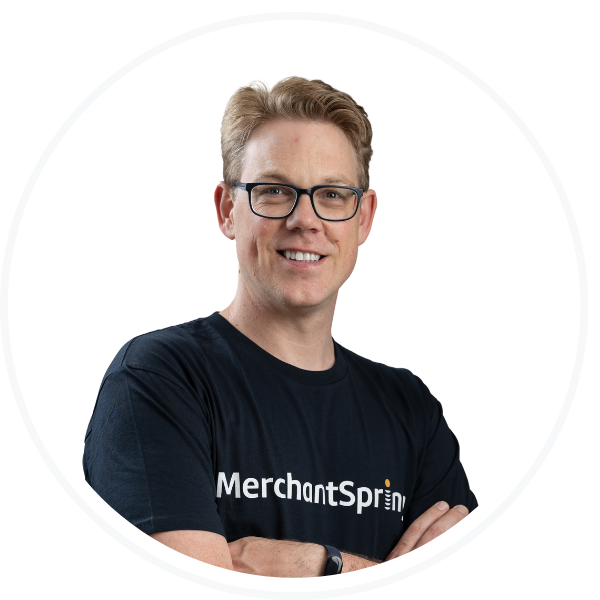
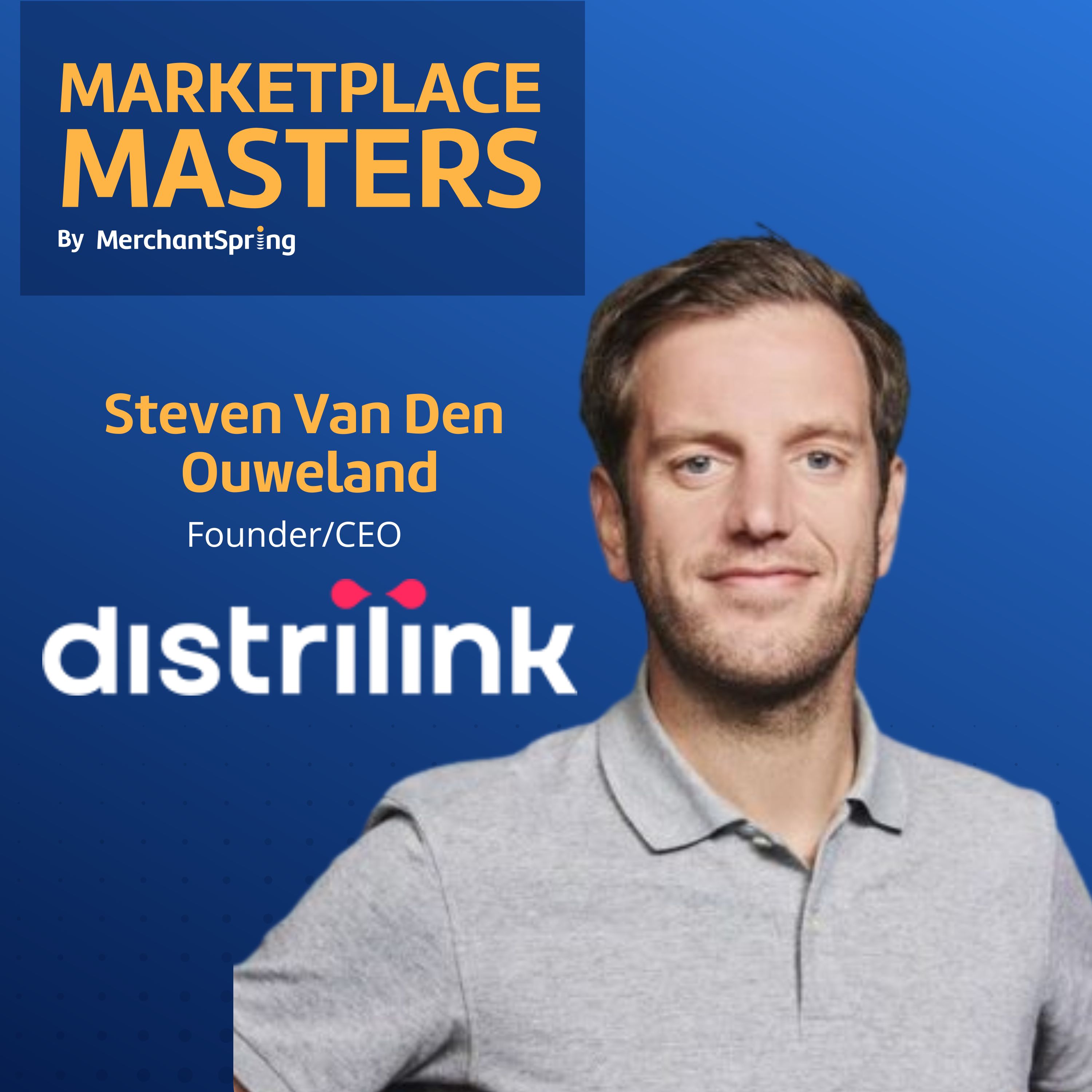




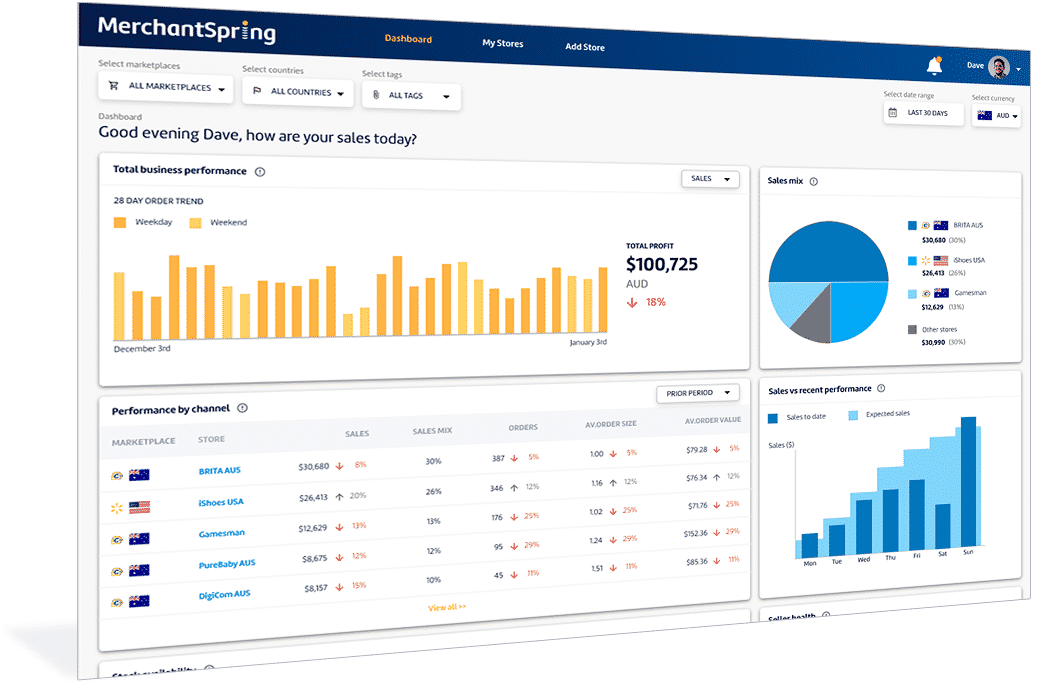

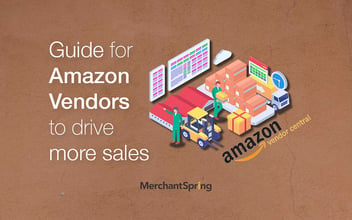
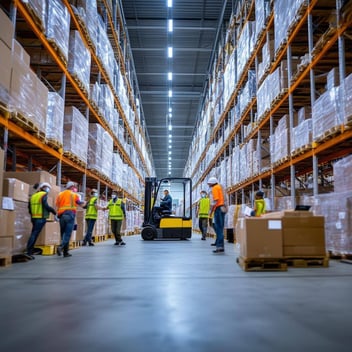
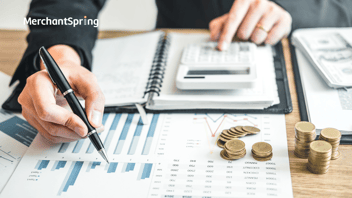



Add a Comment